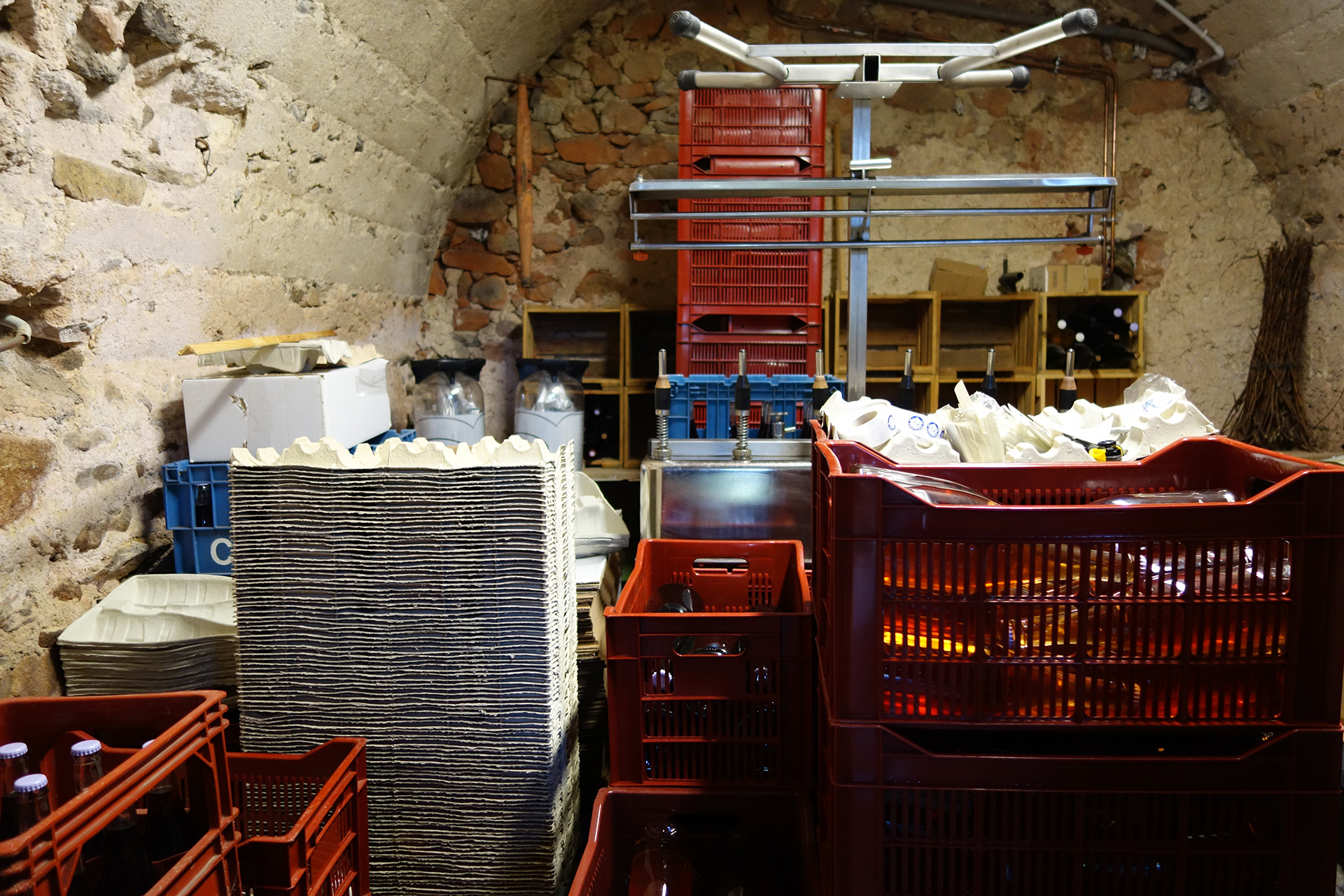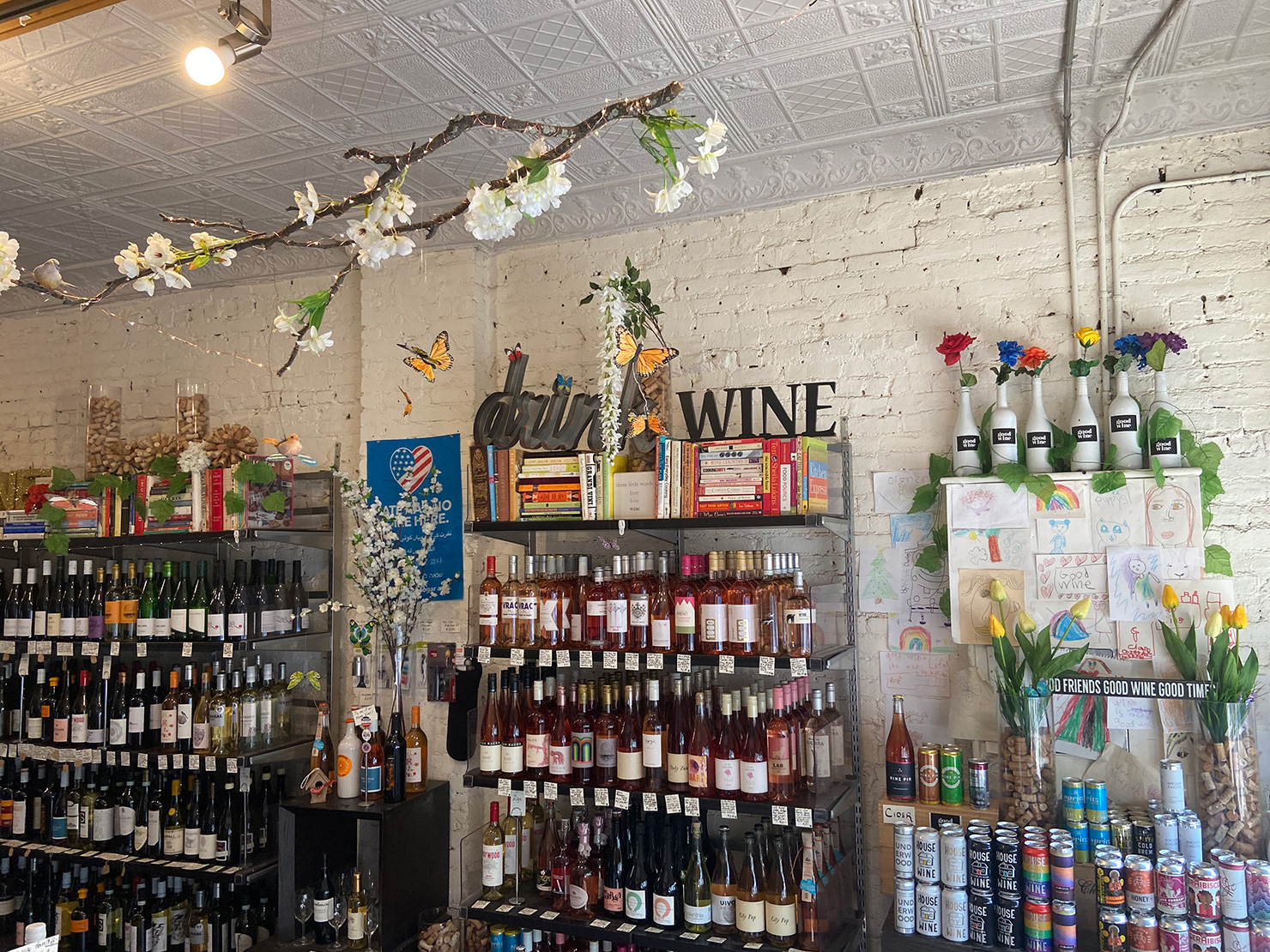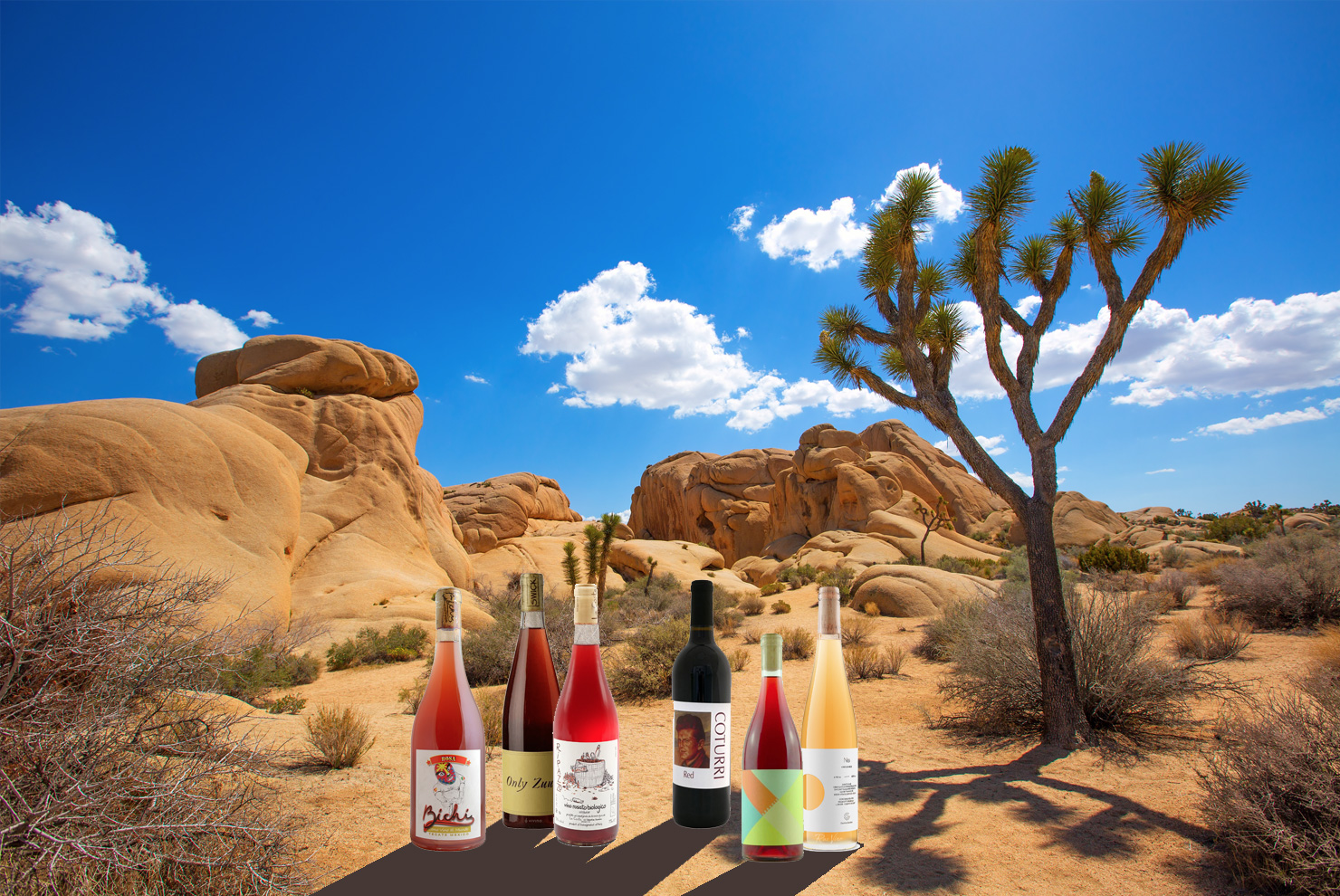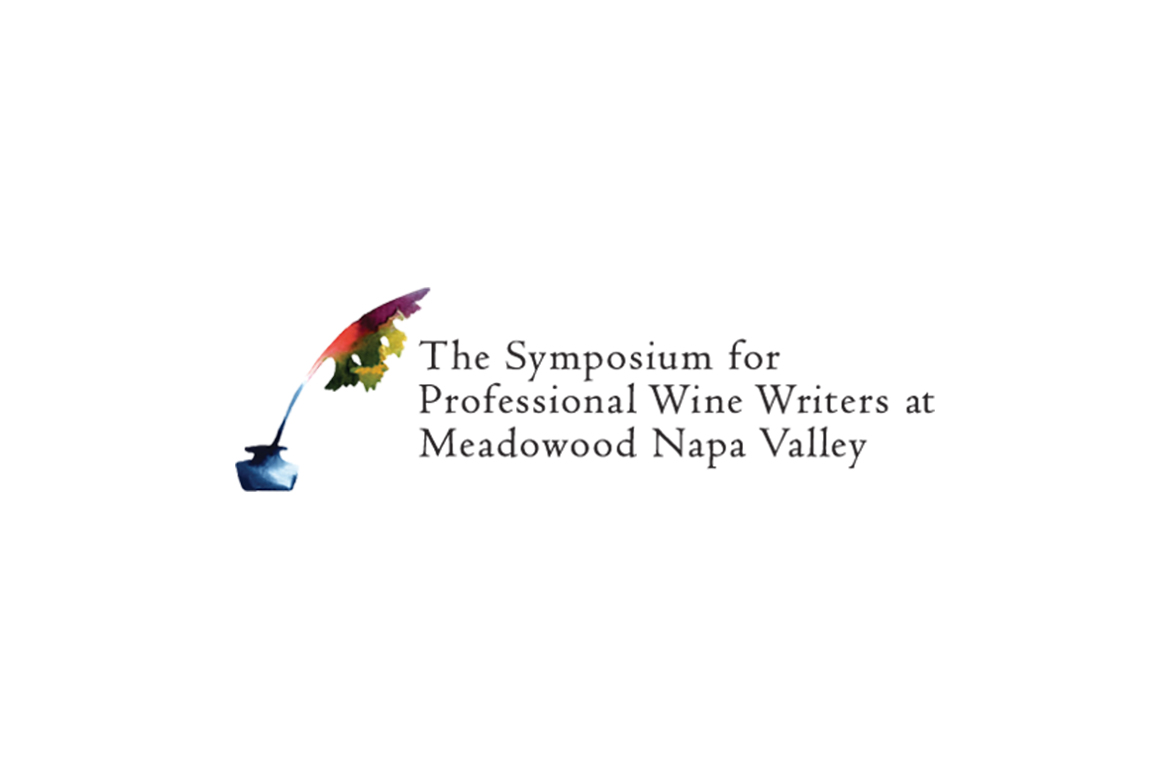Madriat is a hamlet of some 114 residents in the southern reaches of the Puy-de-Dôme department of Auvergne, far from the suburban sprawl of Clermont-Ferrand, in the foothills of the Chain des Puys. I’ve come to visit Aurelien Lefort, a painter and illustrator, a former Parisien, who in recent years has produced tiny quantities of glittering, high-toned, unsulfured wines from tiny parcels he rents in the area. He ranks among the vanguard of Auvergne natural winemakers who are making long-overlooked, quasi-industrial central France an unlikely source of international fascination.
Lefort’s home and winery is in the hills outside Madriat, a group of beige stone dwellings called La Brugère. His house is identifiable from the empty natural wine bottles festooning the crevices of the low stone walls outside. We taste at the entrance to one of two garages that comprise his winery, as his toddler daughter plays outside on a trampoline ensconced in safety netting. Lefort’s situation in Madriat is isolated, relative to the other dozen-plus natural winemakers working in Auvergne, who are otherwise mostly clustered within 30 minutes’ drive of Clermont-Ferrand. He says it suits him.
“I like the idea of being autonomous,” he says. “To work alone, to be in nature.”

Lefort is lean, in his late 30s, with hard blue eyes and a pensive, sincere demeanor. He is what the French call attachant—someone who quickly evokes sentimental attachment. I have two separate friends who harvested with him at different stages in 2018; the one who put us in contact instructed me, “Hug him very tightly for me.”
Lefort had only just finished harvesting when we tasted together in early November. His parcels of Gamay, Pinot Noir, and Chardonnay, totaling three hectares, are piecemeal scraps of formerly-abandoned vines, mostly very low-yielding. Here, he says, you find less of the region’s noted volcanic basalt and more clay, with quartz and granitic influences. Each parcel ripens at its own pace, and Lefort, who seeks an almost diabolically maximal ripeness, harvests with handfuls of friends in stages over the course of over a month.
2018 here, as elsewhere in France, was a generous vintage. Lefort’s vinification garage is chock-a-block with small fiberglass tanks, most at the very debut of what will be a long and peculiar cycle of vinification. In an unusual reversal of standard winemaking practice, Lefort’s wines spend far more time fermenting whole-cluster than they do in élévage—often three to five months or more. He achieves this without undue extraction by conducting what one could call a very long immersive enzymatic fermentation. By immersing whole-cluster grapes in direct-press juice in small tanks, he recreates the anaerobic environment and the intracellular fermentation effects of a carbonic maceration, but without the addition of CO2. It is a novel technique, practiced, for now, only by a handful of other winemakers in France. He says in his case he did it initially to fit more harvest into his small tanks.

“It went little by little. In the beginning, I did one-month macerations, then one-and-a-half months, then two months,” he says. “We start[ed] to extract things that are more tannic, with more body, more robust. I find there’s more depth especially.”
Nowadays he often presses in March what he harvested in October, in what amounts to an astonishing Hail Mary pass of first-phase intracellular fermentation. After pressing, the wines typically see just a month or two in barrel before bottling.
All of the wines are produced under the Vin de France designation, allowing Lefort the maximum creative leeway in blends. We taste a tank of Pinot Noir fermenting whole-cluster in direct-press juice of old-vine Gamays. Gamays, plural: in Auvergne one finds the native Gamay d’Auvergne as well as what Auvergne winemakers confusingly call Beaujolais Gamay. (For what’s it’s worth, the two grapes have very distinct characters and behave entirely differently in vinification.) Another vat contains a blend of Gamay, Pinot Noir, and Chardonnay. Another is a new négoçiant wine, a skin-macerated Roussanne from Chignin-Bergeron, purchased with the help of his Paris agent, Clovis Ochin.
In the parlance of his old métier, he describes the wines as “sketches” at this stage.
“It’s interesting to wait, to do long macerations on this type of grape,” he says of some old-vine Gamay d’Auvergne. “Now we’re at a stage when it’s a cloud of all the coarser expressions of fermentation, but little by little we obtain the tannins and bitters and things that bring complexity, that bring the fruit and finesse.”


Lefort came to wine relatively late in life, in his late 20s, after studying painting and illustration in Brittany.
“Before, for me, wine was disgusting. The wine my friends brought from the supermarket, I didn’t like the effect it had, I didn’t like the taste,” he says. “When I discovered that wine was a product that could bring something agreeable to the body, that it wasn’t just to get drunk on, I began to appreciate the people who made it. I met people who really loved what they did and who had a big respect for the environment.”
Lefort apprenticed for two years with the noted Loire biodynamicist natural winemaker Michel Auger, who has since retired, before coming to Auvergne in 2011 and working alongside Auvergne natural winemaker and négoçiant Patrick Bouju. Since Lefort’s first vintage in 2012, his singular wines have become highly sought-after, for Paris clients like La Cave des Papilles, Le Cadoret, Crus et Découvertes, and YARD, or for his small circle of overseas importers, who include the UK’s Gergovie Imports and Sweden’s Vin & Natur. The success is all the more impressive given how challenging his wines can be. Lefort doesn’t shy away from bottling wines that are off-dry, lightly sparkling, lightly volatile, or some combination of the three, as in the case of his juicy, piquant pétillant-naturel “1=1.” His bottles, too—with their crown caps and clear glass, their hand-drawn labels bearing Lefort’s own private iconography, their lack of vintage, geographic, or varietal information—are of a gnomic nature on par with those of his Auvergnat natural wine forbear Pierre Beauger.

“There’s a logic,” Lefort says of his labels, “but you have to know it.”
From his storage room he produces a bottle of finished wine that we’ll share upstairs in the warmth of his living room. He is the image of the responsible, doting father as he beckons his daughter to climb the steps to join us. Then, before opening a pot of yogurt for his daughter and the bottle we’ll share, Lefort throws on a track of incongruous thumping four-on-the-floor techno, a small hint of his journey to Madriat and the questing open-mindedness that drove him this far.

























